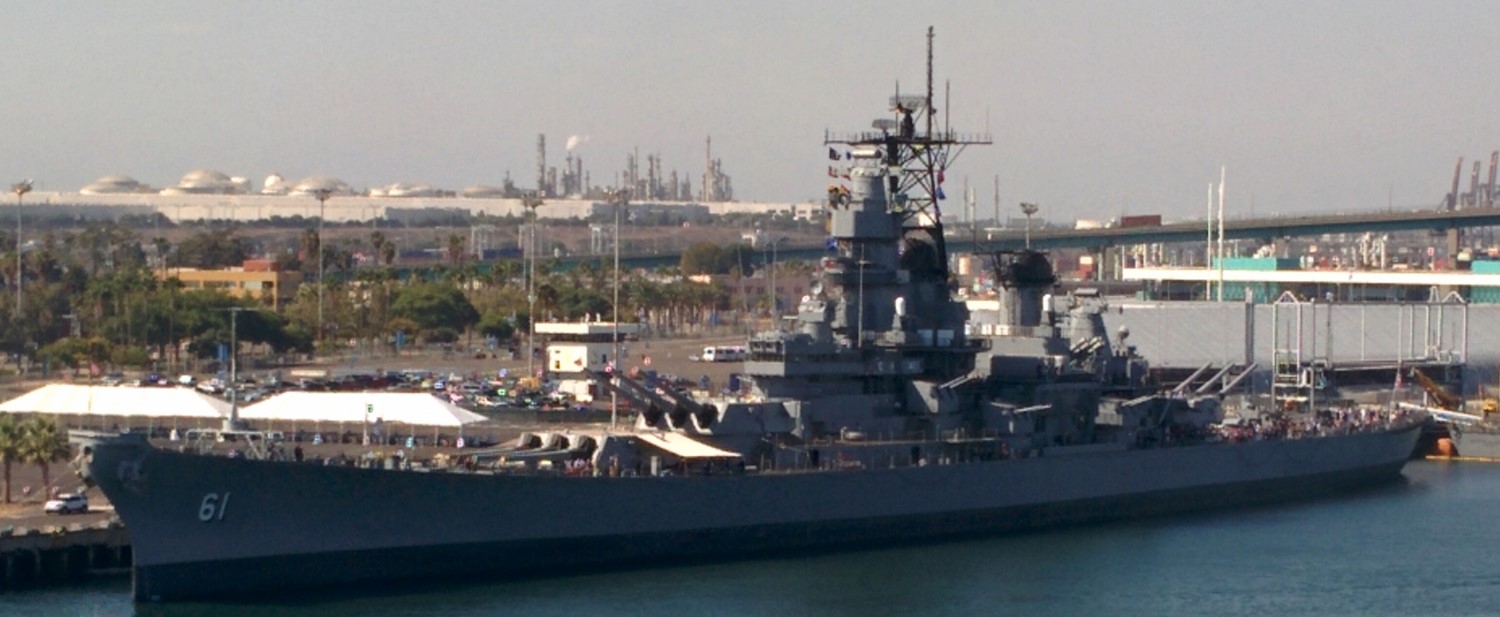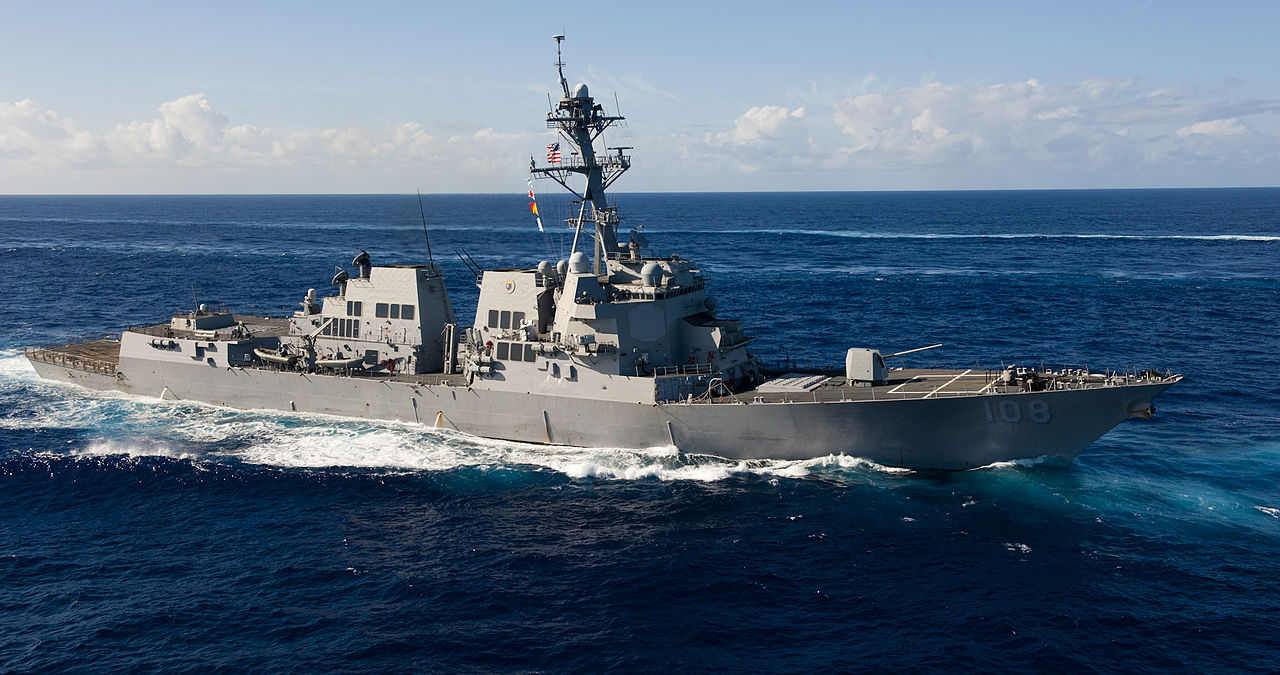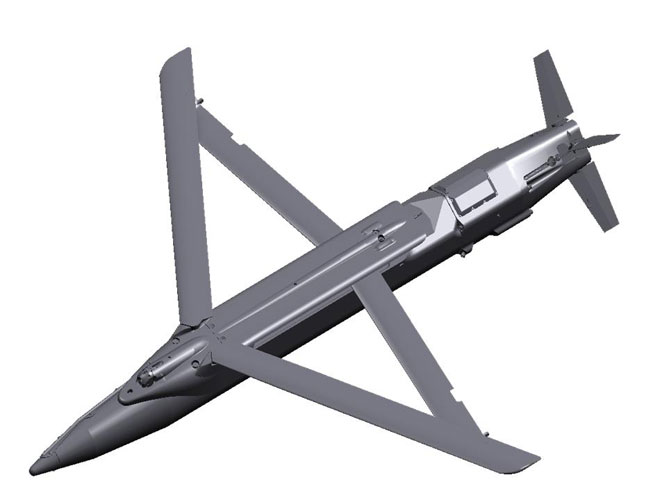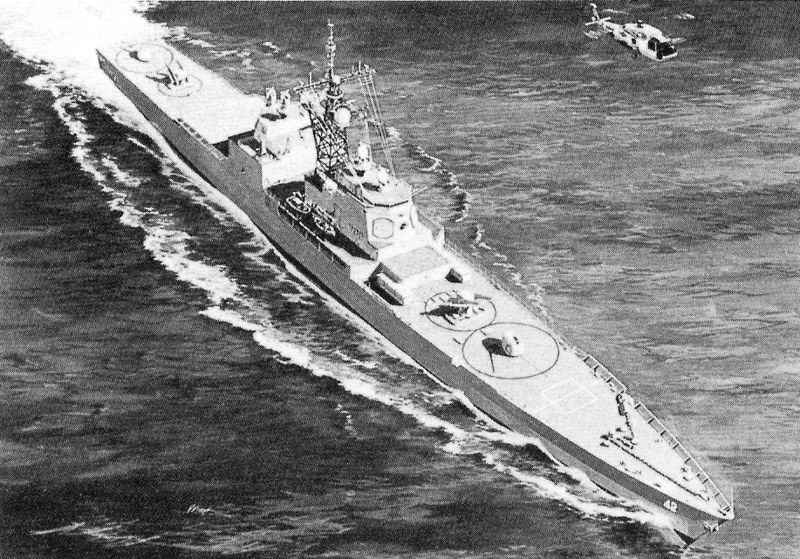Should we reactivate the battleships? That was a common question I got while tour-guiding, and even more common online.1 As such, I figured I should lay out my position in some detail here.

Iowa moored in Los Angeles
In accordance with Betteridge’s Law of Headlines,2 my answer is no. Reactivating the battleships would be a waste of money and manpower. The military capability of the ships would be extremely low, and the cost would be excessive.
Most of the support for battleship reactivation comes from a misunderstanding of the reasons for the reactivation in the 1980s. Traditionally, this is believed to have been the result of either a need to counter the Soviet Kirov class, or a desire for heavy gunfire support platforms. Today, with the demise of the Soviet surface fleet, most support focuses around the later option. I've previously evaluated both options and shown them to have been flawed. Instead, the Iowas were brought back to provide more Tomahawk capability and to serve as capital ships, impressing friends and potential foes, in service to the Reagan Administration's Maritime Strategy. The first role is entirely superfluous today. Ships routinely deploy with empty VLS cells, and the amount of work required to give an Iowa VLS was so excessive that it was rejected in the late 80s.3 The battleships were and are superb in the presence role, but in today's fiscal and strategic environment, there are many higher priorities.

USS Wayne E Meyer, an Arleigh Burke class destroyer
Not only was the bombardment mission insufficient to explain the reactivation in the 80s, it's become less and less relevant today. A traditional amphibious landing in the face of heavy opposition, a la Normandy or Iwo Jima, is never going to happen again, because it would be a deathtrap in the face of determined opposition. The USMC has spent the past 50+ years figuring out new and exciting ways of putting troops ashore where the enemy isn’t, using helicopters and hovercraft, and the 20-mile range of Iowa’s guns is entirely inadequate to support such an attack.

A Marine Cobra and a Landing Craft Air-Cushion
The other major problem with the bombardment mission, whether in support of an amphibious landing or just against something the US wants blown up, is the increasing precision available from other weapons. In the 80s, smart bombs were expensive, and shells were cheap. Today, we’re less accepting of collateral damage, and the cost of guided weapons has plummeted. A single modern smart bomb is capable of taking out targets that used to take entire air raids, or salvoes from a battleship.

A Small Diameter Bomb
A good candidate for a ship-based bombardment weapon would be to adapt the Ground-Launched Small Diameter Bomb for naval use, potentially quad-packing it into VLS cells. This would allow us to turn any ship with VLS capability into a bombardment platform, instead of being forced to rely on a few battleships. The SDB is a 250 lb GPS-guided glide bomb, intended for attacking targets where minimal collateral damage is required. It's a favored weapon for attacks on light targets, and the variant in question can reach out nearly 80 miles and attack targets the battleship guns could never reach. It could also be developed for a fraction of the cost of reactivating even one Iowa, and the SDB itself is fairly cheap.4 For targets too hard for the SDB, either Tomahawks or any of a multitude of air-launched weapons could be used.

Iowa being reactivated
Now what about the costs and obstacles? I don’t have a firm estimate of reactivation costs, but my best guess is that it would be above $2 billion per ship, more than a new Burke.5 Much of the infrastructure and knowledge necessary to operate the ships has been lost. When she was selected for reactivation in 1981, New Jersey had only been out of active service for 12 years. It’s been over twice that long now since Missouri retired, and much of the supporting infrastructure, such as shells and spare gun barrels, was scrapped in 2006. In late 2017, what I believe to be the last batch of 16" shells was put up for disposal.

USS Sacramento
Moreover, many of the systems that were still in service on other ships in the 80s have since become obsolete. The machinery from one of the canceled Iowas, USS Kentucky (BB-66), was used on two fast replenishment ships, USS Sacramento and USS Camden. These ships provided the nucleus of the reactivation crews for the machinery in the 80s, but were retired in 2004 and 2005 respectively.

USS Wasp
The problems with engine reactivation go beyond the specific machinery. Recent decades have seen oil-fired steam plants almost totally disappear from USN service. With the exception of the Wasp class amphibious assault ships, and possibly a few old auxiliaries, the fleet is now driven by either nuclear plants, gas turbines, or diesels. The Boiler Technician (BT) rating was merged into Machinist Mate in 1996, and the support infrastructure for running boilers has been dismantled. The schools are closed, the shops have mostly had their equipment scrapped, and standing them back up would be unduly expensive for the few ships they'd support.6

USS Oklahoma City
Likewise, the 5”/38 guns were still in service on a few ships in the 80s, but the last, the missile cruiser Long Beach, was decommissioned in 1995.7 The main battery fire control system on the Iowas was the same as that on US gun cruisers, the last of which, Oklahoma City, had remained active until 1979. The Mk 37 for the secondary battery was still active on several modernized WWII destroyers until the early 80s. Obviously, this institutional knowledge is simply not present today, and would have to be rebuilt from manuals or the systems replaced.

Iowa's crew on deck, 1984
The biggest problem, though, is manpower. Personnel costs take up an increasing portion of military funding, and the Iowas were designed in an era where manpower was cheap. The 80s refit did what it could to solve this, but making major reductions past the ~1,500 crew onboard then would be prohibitively expensive or involve sacrificing significant capability.8 Based on numbers for the Arleigh Burke class destroyers, a typical crewmember costs the USN $80-90,000 each year in 2010 dollars. We'll round this to $100,000 per man to account for inflation.9 To run one Iowa is going to cost about $150 million in personnel costs alone, which is enough to pay all of the yearly operating costs for 3.4 Burkes. None of this takes into account the fact that the Iowas will not match the habitability of later ships, hurting retention, and that small, specialized units often suffer because there is not a good promotion path for those who gain the unique skills involved.

Iowa conducts underway replenishment from the ammunition ship Nitro
Besides manpower, the Iowas would need maintenance and fuel, and lots of both. During the 80s, the ships faced problems finding needed parts, and lots of parts were either custom-built or scavenged. This is another situation which will have gotten worse in the intervening decades. If we assume that these expenses scale proportional to hull size, then yearly maintenance alone will cost about as much as two more Burkes. I'm not going to attempt to untangle the math behind fuel usage, as I believe I've made my point.

An artist's rendering of the proposed Strike Cruiser from the 1970s10
The only real role a reactivated battleship would have is as a capital ship, for sending messages that the US is taking conflicts seriously. It's possible that our carriers are stretched too thin for this role, and that we need something cheaper than a carrier and more impressive than a Burke or a Ticonderoga to fill the gap. But if this is the case, then we should design and build such a ship from scratch. It might be slightly more expensive to build than a battleship reactivation, but the annual running cost will be much lower, and the military utility vastly higher.11
The challenges involved in bringing the Iowas out of their well-deserved retirements are significant, and the benefits we would get are minimal. Even advocates of increased defense spending should be able to think of numerous better places to put money than a group of 80-year-old ships.
2024 Addendum: When I wrote this post, there was a constant stream of articles from National Interest (and, to a lesser extent, similar websites) advocating the reactivation of the Iowas. These went away in about 2020, for reasons that I would very much like to understand, to the point that it is just not a genre on the internet any more.
1 This was far more true when I wrote this post in 2018 than it is today. Back then, National Interest could pretty much be counted on to have one or two pro-reactivation articles a month, and although they were the worst, they weren't alone. This stopped sometime in about 2020, and I'm not sure why. ⇑
2 Any headline ending in a question mark can be answered with the word "no". ⇑
3 The armored box launchers they used when first in commission have all been retired. ⇑
4 At least by the standards of military weapons, where $70,000 for a smart bomb is a really good deal. ⇑
5 2018 dollars. Inflation-indexed reactivation costs from the 80s are in the $700 million-$1 billion per ship range. They would need a lot more work now than they did then. ⇑
6 I'm not sure how they support the boilers on the Wasps, but from everything I've heard, they don't do it in a way that applies to the Iowas. The Wasps date to the late 80s, and I'd be very surprised if there hadn't been major advances between the early 40s and then. ⇑
7 She actually seems to have lost her 5"/38s during a refit in the late 80s. ⇑
8 One example is loading supplies aboard. Modern vessels are designed to get food and other stores on pallets, which are then moved by forklift and struck down using elevators. Striking down supplies on Iowa involved forming a long chain of sailors and passing them down one box at a time. Fixing this would involve a huge amount of work. ⇑
9 This was done in late 2017. It would be more now. ⇑
10 This is the closest the US has gotten to building a large surface warship in the modern era, hence the picture. ⇑
11 Just to be clear, I'm not really advocating for this. I'm pointing out that even at the one role the battleships are incontestably good at, there are better and cheaper ways to achieve the objective. Whether or not we need to fill that role is another question entirely. ⇑

Comments
So if the US were to develop a "show of force" ship that wasn't a carrier, what kind of specifications/features would you expect to see?
What features do I expect to see, or what features do I want to see?
The answer to the former heavily depends on who drives the adoption of the ship. If it's some bizarre idea out of Congress, goodness knows what we'll get. Probably a bigger Zumwalt, with lots and lots of guns and anything else they think is a good idea to cram in.
If it's the ship I think would be most useful, here's a sketch:
25,000 tons full load. The designers are told to make it look good. I'd go for the most impressive gun armament I can get cheaply. That might mean 2-4 AGS, like the Zumwalt. Even if the smart ammo doesn't work, the main point is to impress visitors. Otherwise, 4-6 5". Basically a Burke/Tico combat system, probably with some extra VLS cells. Decent air facilities, 2-4 helicopters. Use the remaining tonnage for good flagship facilities. These ships should be able to replace the Blue Ridge and Mount Whitney, as well as being good at presence roles.
Out of curiosity: One always hears about old decommissioned ships being scrapped for materials. Wikipedia happens to claim that CVN-80 will use recycled steel from the previous Enterprise, though I'm sure that's more for show than anything else.
How much economic value is there in the corpse of an $8.5B (when new) carrier?
Well, the last carrier I heard of being sold (I think it was Ranger, but I can't promise that's correct) was sold for $1. But the contractor had to do the environmental cleanup. I have no clue how much profit they made on it.
How large a modern warship would it take to defeat a state-of-the-art battleship from mid-century, such as the Bismarck? I once suggested pitting a modern missile boat such as the FNS Hamina against the Bismarck, and was told that the Hamina's four RBS-15 SSMs wouldn't do more than scratch the paint on the Bismarck.
Define "defeat". Modern warships are set up to fight other modern warships, not battleships. If you want to actually sink the ship, then you need a submarine with heavy torpedoes. You could disable it by destroying the upperworks with missiles.
Depends on where they hit. My Big Book of Naval Weapons says 250 kg SAP warhead. I'd say that's going to be broadly equivalent to a 10"-12" shell in destructive effect, though nowhere near as good at penetrating armor. If you get a hit on the belt, they'll bounce. If you hit the superstructure, they'll do a lot of damage. Bismarck was disabled by mostly smaller-caliber (6" and 8") hits in the superstructure. Four missiles is fewer than I'd like, but I'd estimate a dozen or so hits would render Bismarck combat-ineffective.
So when you list the reasons for battleship reactivation, I think you have missed a very important value that the Iowa class ship has. We can use them as planetary defense assets to repulse an invasion of baby elephants. I wish I had made this up but no, it was not me (see the Sci-fi book Footfall where the Missouri is remodeled into an Orion Ship). I Jest. I really like your web site. I had allays wondered about just how below water line, broadside, torpedoes on capital ships worked. Your answered that and your Blog more else cooked away the rest of my morning.
Oh as a side note. Having grown up in the Puget Sound I toured the Missouri in the early 80s when it was in Bremerton and was always disappointed that was not allowed into the gun turrets!
That's not quite what happened in Footfall. They used turrets from Missouri on their Orion-drive battleship, but they didn't convert the entire ship. I haven't read the book in a long time, and in retrospect, that's not an idea that makes much sense.